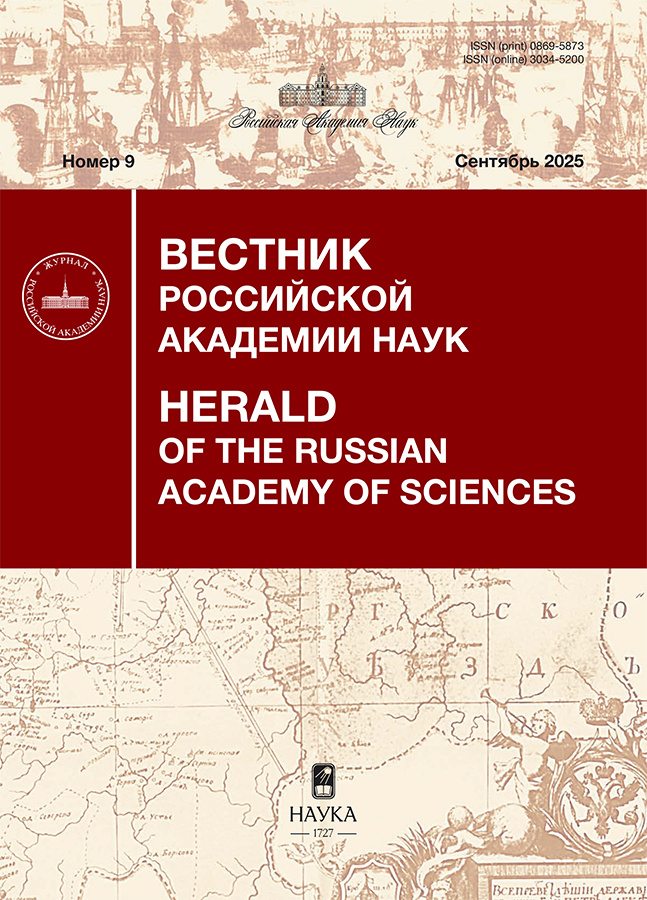Herald of the Russian Academy of Sciences
ISSN (print): 0869-5873
Media registration certificate: ПИ № ФС 77 - 67137 от 16.09.2016
Founder
Russian Academy of Sciences
Editor-in-Chief
Panchenko Vladislav Yakovlevich, academician RAS, Doctor of Sc., Full Professor
Frequency / Access
12 issues per year / Subscription
Included in
White list (1st level), Higher Attestation Commission list, RISC
Current Issue
No 9 (2025)
НАУКА И ОБЩЕСТВО
The world is on the edge of the era of technological singularity. How will the trends of basic global processes and the evolution of humanity change
Abstract
 3-15
3-15


Lithium-bearing polycomponent deep brines of the hydromineral province of the Siberian platform and their use as a raw material base for the creation of new production in the Irkutsk region
Abstract
 16-26
16-26


ПРОБЛЕМЫ ЭКОЛОГИИ
Towards new assessments of the environmental consequences of the construction of the Mongolian hydroelectric power station
Abstract
 27-37
27-37


ЗА РУБЕЖОМ
Chinese ports: from logistics hubs to instruments of global strategy
Abstract
 38-50
38-50


Bygone times
The Era of Academic Expansion. The “Siberia” Program in Memory of Academicians G.I. Marchuk, A.A. Trofimuk, V.A. Koptyug, N.L. Dobretsov
Abstract
 51-62
51-62


ЭССЕ
Reflections on Science, Religion, Ethnicity and Education
Abstract
 63-69
63-69


Review
Molecular genetic research in detecting and investigating crimes against the person
Abstract
 70-76
70-76


Thirty Anniversary of Taking Rydberg Excitation into Account in Microwave Energy of the Environment, Space and Medicine
Abstract
 77-90
77-90


Celiac disease: extraintestinal manifestations and concomitant diseases
Abstract
 91-98
91-98


Official Section
On the 75th anniversary of Academician of the Russian Academy of Sciences A.N. Torkunov
 99-100
99-100












